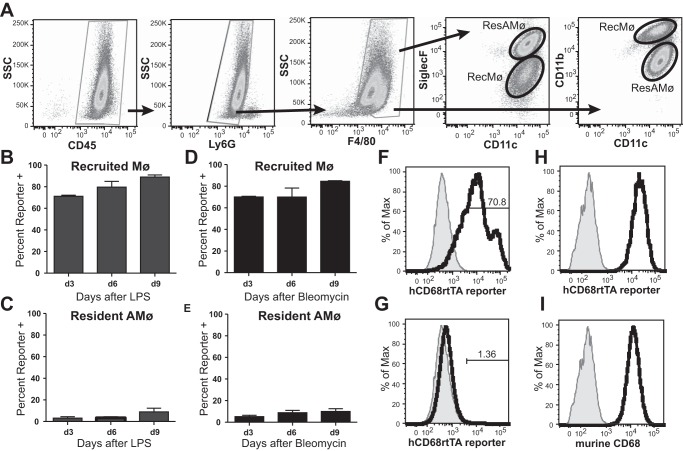Fig. 10.
hCD68-rtTA is activated in the alveolus by recMø but not by resAMø following LPS or bleomycin lung injury. IT LPS and IT bleomycin were used to model acute lung inflammation and fibrotic lung injury, respectively, in hCD68rtTA-GFP mice. For all experiments, doxycycline diet began 3 days prior to lung injury. A: flow cytometry was used to identify recMø and resAMø collected by BAL. Mø were identified by the following gating strategy: higher SSC cells were selected, doublets were excluded, CD45+ cells were selected, Ly6G+ neutrophils were excluded, and F4/80+ cells were selected. Mø subpopulations were separated by CD11c, CD11b, and SiglecF expression. ResAMø were defined as CD11c+CD11blow or CD11c+SiglecF+. RecMø were defined as CD11clow/+CD11b+ or CD11clow/+SiglecF−. Identical gating strategies were employed for both models of lung injury. Representative gating from d6 post-LPS is shown. B and C: GFP reporter expression by recMø and resAMø after IT LPS. D and E: GFP reporter expression by recMø and resAMø after IT bleomycin. F and G: representative histograms of GFP expression on day 6 LPS for recMø and resAMø; day 0 shown in grey. H and I: endogenous murine CD68 expression by recMø and resAMø; isotype shown in grey. All data are represented as means ± SE; n = 4–5 mice per group.

